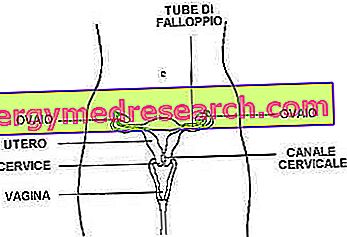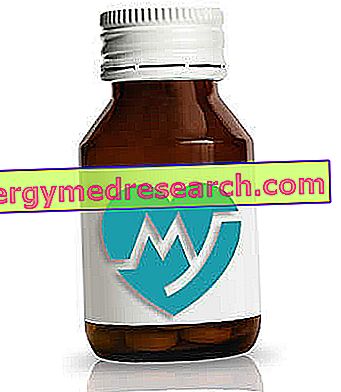Below, you will find links to the main articles of the site that deal with topics related to the menstrual cycle :
The menstrual cycleFollicular phaseOvulation Menstruation Calculation Menstrual cycle Menstrual cycle and fertility Interactions between sport and menstrual cycle Cholesterol and menstrual cycle Ovulation symptomsPeriod

Menstrual phase (days 1 - 5)
The most superficial layer of the uterus, called the endometrium, goes into necrosis (cell death) and detaches into flaps, leaving the veins and arteries that run in it exposed. Thus there is a loss of about 40 milliliters of blood mixed with cellular necrotic residues of endometrium. At the same time, the growth of some follicles begins in the ovary, while the secretion of FSH, or Follicle-stimulating hormone, produced by the pituitary gland that determines the maturation of the follicle and stimulates the production of estrogen by the ovary, increases.
Proliferative phase (days 6 - 14)

In the uterus the superficial circulation of the endometrium is reconstituted and the layer of epithelial cells that covers the vagina thickens to create an environment favorable to the spermatozoa.
In the ovary, only one follicle continues its maturation, while the others undergo involution.
Estrogens increase considerably until they reach a maximum peak just before ovulation and then decrease rapidly. Progesterone, another hormone secreted by the ovary, slowly increases. The FSH decreases and then rises just before ovulation while there is a strong increase in LH, or Lutenizing hormone, always produced by the pituitary gland and which collaborates with the FSH in maintaining normal estrogen production by the ovary beyond to determine the formation of the corpus luteum after ovulation and to stimulate the production of progesterone.
Ovulatory phase (day 14-15)
In the uterus, the endometrium reaches its maximum thickness; in the ovary there is the rupture of the follicle and the expulsion of the egg which is contained in it; estrogen decreases rapidly and progesterone continues to increase. The body's basal temperature, which can best be assessed in the morning as soon as it is awake with a special thermometer to be inserted into the vagina, rises by about half a degree.
The basal temperature measurement methods that some women use to establish the exact time of ovulation are based on this measurement. It must be remembered that this method cannot possibly be effective for contraceptive purposes, due to the fact that most women do not have regular cycles, but rather can be very useful when planning a pregnancy. Therefore, it is not at all shown that all women, three days after the slight rise in temperature, can be considered no longer fruitful.
Initial secretory phase (days 16 - 23)
In the uterus, the endometrial epithelium remains at its maximum thickness; in the vagina, on the other hand, the epithelium thins; the corpus luteum forms in the ovary; estrogens and progesterone increase, while FSH and LH decrease.
Late secretory phase (24 - 28 days)
The regression of the corpus luteum begins in the ovary; estrogens and progesterone decrease while FSH and LH remain at low levels.
The reduction of progesterone levels leads to the exfoliation of the uterine mucosa (endometrium), therefore to menstruation; at this point the menstrual cycle can start again.
Insights
Changes in the menstrual cycle
Dysmenorrhea - Menstrual pains Oligomenorrhea Hypomenorrhea Metrorrhagia Menorrhagia Painful ovulation - Mittelschmerz Spotting Hypermenorrhea Polimenorrhea Alterations in the premenopauseHow to manage menstruation
Menstrual cups Internal absorbents Nutrition and premenstrual syndrome Remedies for menstrual pain Remedies for the menstrual cycle Irregular Drugs for premenstrual syndrome Painful menstruation drugs



